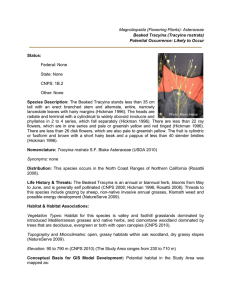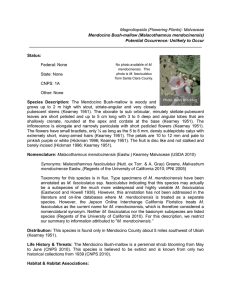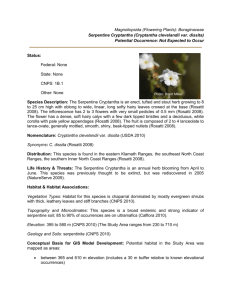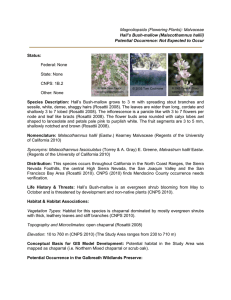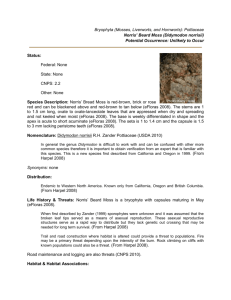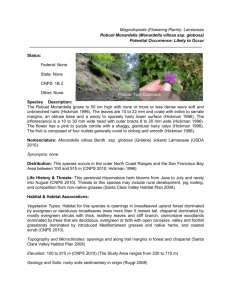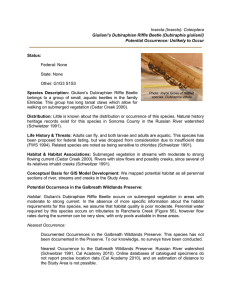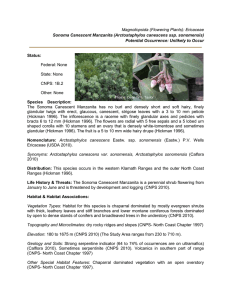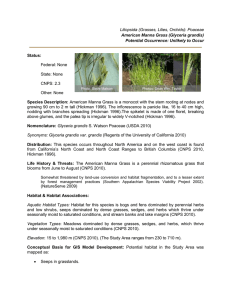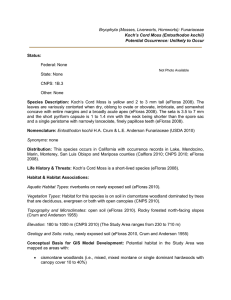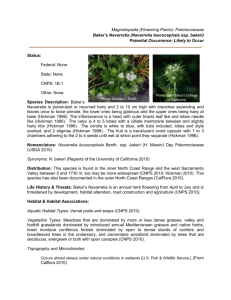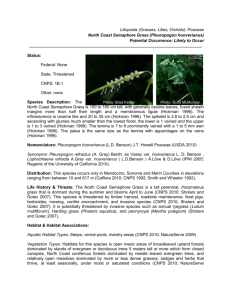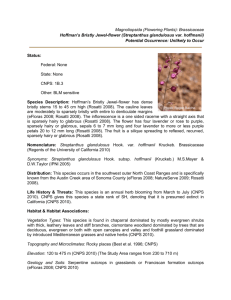HEAR Text - Sonoma State University
advertisement
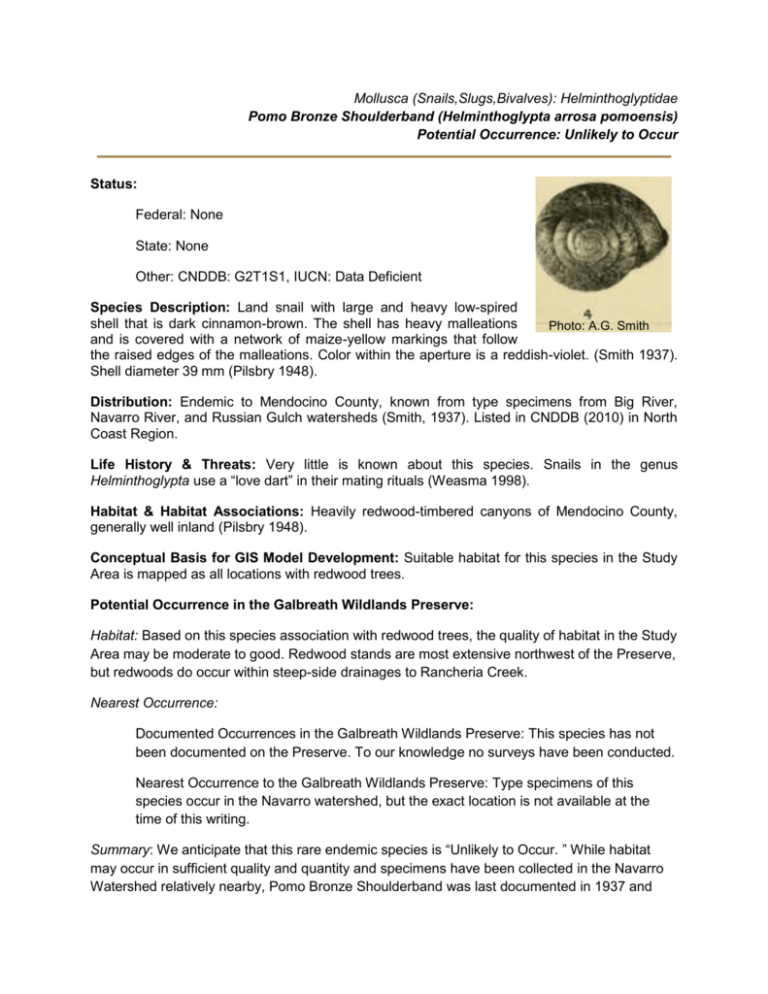
Mollusca (Snails,Slugs,Bivalves): Helminthoglyptidae Pomo Bronze Shoulderband (Helminthoglypta arrosa pomoensis) Potential Occurrence: Unlikely to Occur Status: Federal: None State: None Other: CNDDB: G2T1S1, IUCN: Data Deficient Species Description: Land snail with large and heavy low-spired shell that is dark cinnamon-brown. The shell has heavy malleations Photo: A.G. Smith and is covered with a network of maize-yellow markings that follow the raised edges of the malleations. Color within the aperture is a reddish-violet. (Smith 1937). Shell diameter 39 mm (Pilsbry 1948). Distribution: Endemic to Mendocino County, known from type specimens from Big River, Navarro River, and Russian Gulch watersheds (Smith, 1937). Listed in CNDDB (2010) in North Coast Region. Life History & Threats: Very little is known about this species. Snails in the genus Helminthoglypta use a “love dart” in their mating rituals (Weasma 1998). Habitat & Habitat Associations: Heavily redwood-timbered canyons of Mendocino County, generally well inland (Pilsbry 1948). Conceptual Basis for GIS Model Development: Suitable habitat for this species in the Study Area is mapped as all locations with redwood trees. Potential Occurrence in the Galbreath Wildlands Preserve: Habitat: Based on this species association with redwood trees, the quality of habitat in the Study Area may be moderate to good. Redwood stands are most extensive northwest of the Preserve, but redwoods do occur within steep-side drainages to Rancheria Creek. Nearest Occurrence: Documented Occurrences in the Galbreath Wildlands Preserve: This species has not been documented on the Preserve. To our knowledge no surveys have been conducted. Nearest Occurrence to the Galbreath Wildlands Preserve: Type specimens of this species occur in the Navarro watershed, but the exact location is not available at the time of this writing. Summary: We anticipate that this rare endemic species is “Unlikely to Occur. ” While habitat may occur in sufficient quality and quantity and specimens have been collected in the Navarro Watershed relatively nearby, Pomo Bronze Shoulderband was last documented in 1937 and dramatic land use changes have occurred in much of the land in the watershed since that time. Also, very little is known about habitat requirements, and the accuracy of mapping redwoods alone as a habitat requirement is suspect. References Smith, AG. 1937-1938. Three new subspecies of Helminthoglypta arrosa (Gould). The Nautilus 51(3): 81 Pilsbry, HA. 1948 Land mollusca of North America: (north of Mexico). Volume 3 of Monographs of Academy of Natural Sciences of Philadelphia 3(3): 117-118. Weasma, TR. 1998. Conservation Assessment for Helminthoglypta hertlieni, Oregon Shoulderband. <http://www.fs.fed.us/r6/sfpnw/issssp/documents/planning-docs/20050713-molloregon-shoulderband.doc> Accessed 2010 Jun 18. Species Account Description: Kandis Gilmore & Emily Harvey



